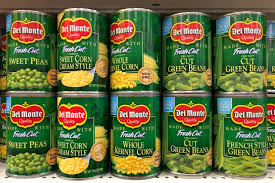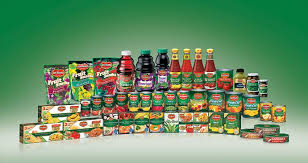Del Monte Foods bankruptcy 2025 is big news in the food world. The company, known for canned fruits and vegetables, filed for Chapter 11 on July 2, 2025. After 139 years in business, Del Monte is now looking for a buyer while it continues operations.
This post explains what happened, why it happened, and what could come next. Del Monte has been a part of many homes for decades. Now, its future is uncertain.

What Is the Del Monte Foods Bankruptcy 2025?
Del Monte filed for bankruptcy in a U.S. court in New Jersey. The filing is part of a plan to sell the business. The company is working with lenders to keep the lights on during the sale process.
Chapter 11 means the company will keep running while it tries to fix its problems. This includes paying bills, selling assets, and cutting debt.
The bankruptcy includes only U.S. operations. Del Monte’s international units are not part of the filing. They will continue as usual.
Why Did Del Monte Go Bankrupt?
There are several reasons behind the Del Monte Foods bankruptcy 2025.
1. Falling Demand
Canned food is not as popular as it once was. Many shoppers now prefer fresh food or store-brand products. This change has hurt Del Monte’s sales for years.
2. Rising Costs
The company faced higher costs for steel, shipping, and labor. Steel tariffs made cans more expensive. Inflation raised costs across the board. But Del Monte could not raise prices enough to cover those costs.
3. Heavy Debt
Del Monte borrowed a lot of money in the past years. Interest payments became too high. In 2020, interest costs were $66 million. By 2025, they were $125 million. That’s a big jump.
4. Too Much Inventory
The company made more products than it could sell. This led to extra stock. They had to offer discounts to clear shelves. That hurt profits even more.
What Are the Company’s Finances?
In its filing, Del Monte said it has between $1 billion and $10 billion in both assets and debts. It owes money to over 10,000 creditors.
The company secured $912.5 million in new loans. This money will help keep operations going during bankruptcy. It also allows the company to pay workers, suppliers, and other costs.
Some of the biggest unpaid bills include:
- Uber Freight: $9.1 million
- Saddle Creek Logistics: $1.3 million
These debts show how much the company depends on shipping and storage partners.
What Brands Does Del Monte Own?
Del Monte owns several popular food brands in the U.S., including:
- Del Monte: canned fruits and vegetables
- Contadina: tomato sauces and pastes
- College Inn: broths and stocks
- Kitchen Basics: cooking stocks
- Joyba: bubble tea sold in stores
These brands are found in many homes across America. Even as the company files for bankruptcy, these products are still on shelves.
The plan is to keep selling them. The company hopes to find a buyer who will continue the brands.
What Happens to Employees and Suppliers?
As part of the Del Monte Foods bankruptcy 2025, the company says it will keep U.S. operations running. That means plants stay open, and products continue to ship.
Still, the future is uncertain. A sale could bring changes. Jobs may be cut, or factories could close. Suppliers may face late payments or new terms.
Retailers like Walmart and Target will likely keep stocking Del Monte products for now. But a long process may lead to gaps in the supply chain.
What Comes Next in the Bankruptcy?
Del Monte entered a deal with its lenders called a Restructuring Support Agreement. This agreement outlines the plan to sell the business and repay debts.
The company will go through a court-supervised sale. This means it will look for buyers in a fair and open process. Interested companies will submit bids. The court will decide which deal is best.
The process could take several months. A final sale may happen by late 2025 or early 2026.
What This Means for Shoppers
For now, shoppers will still see Del Monte on store shelves. There is no sign of immediate product changes or shortages. But over time, the brand could change hands.
If a new owner takes over, they may change packaging, recipes, or pricing. They may also cut less popular products.
For loyal customers, this may be disappointing. Del Monte has been a trusted name since the 1800s. Many people grew up eating their green beans, corn, or fruit cups.
What This Says About the Food Industry
Del Monte Foods bankruptcy 2025 is part of a bigger trend. Legacy food brands are struggling to keep up. Many are losing ground to newer, smaller brands.
Consumers now want fresh, natural, or organic food. They also want short ingredient lists and clear labels. Big canned food brands like Del Monte have not kept up.
At the same time, inflation and rising costs are hitting all companies. Big or small, no one is safe from changing markets.
Del Monte is not alone. Other well-known chains, like JoAnn Fabrics and Hooters, also filed for bankruptcy in 2025.
Will Del Monte Survive?
That depends on the sale. If a buyer steps in and brings new ideas, the company may recover. If no buyer is found, the company may be broken up or shut down.
The best outcome would be a sale to a strong food company. That would save jobs, protect suppliers, and keep the brand alive.
Final Thoughts
Del Monte Foods bankruptcy 2025 is a big shift for a company that helped build America’s food shelves. After nearly 140 years, it now faces the biggest test in its history.
The company has funding to keep going for now. It hopes to find a buyer. The future of its brands, workers, and products depends on what happens next.
For now, shoppers can still buy Del Monte products. But change is coming. This story is not over.





